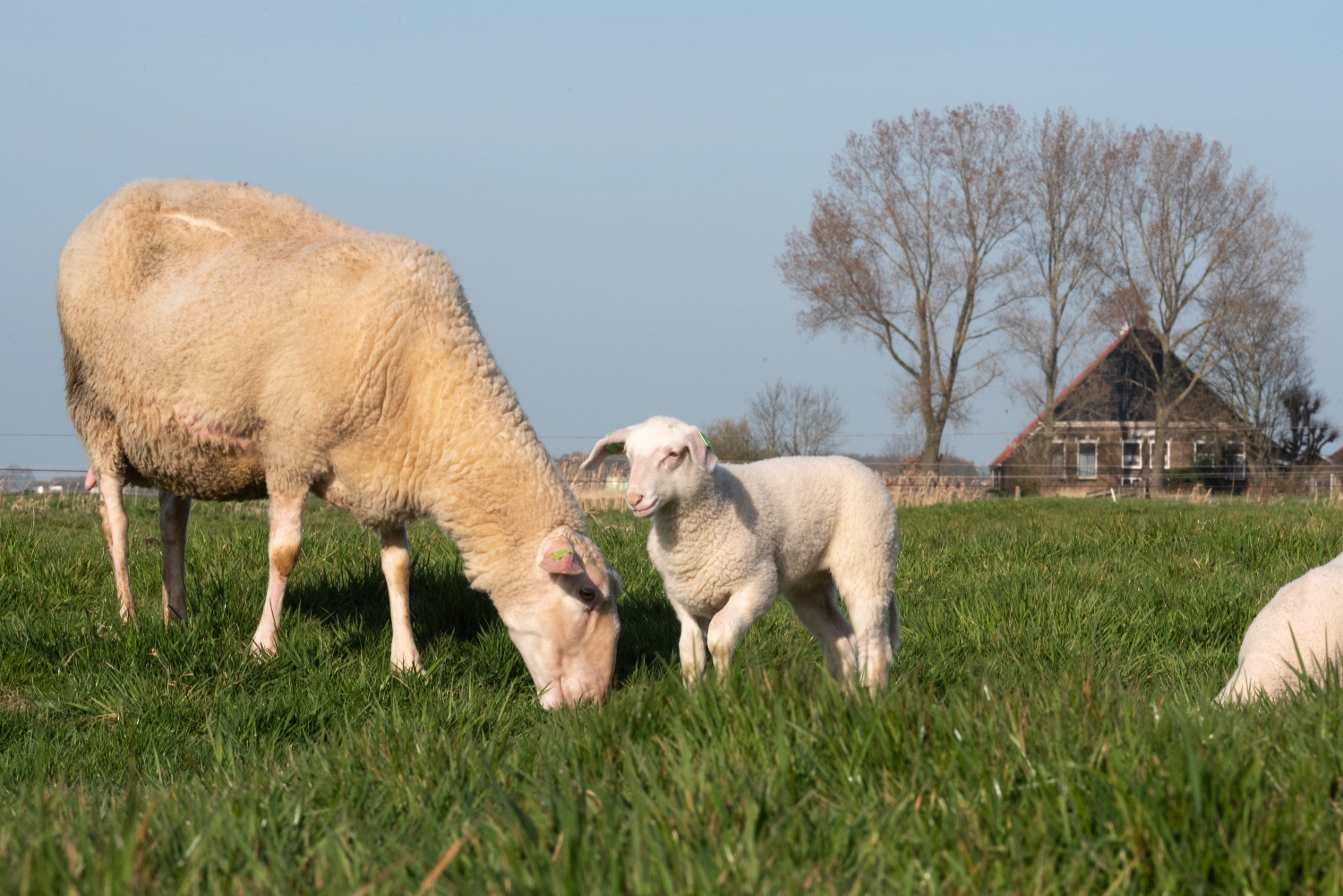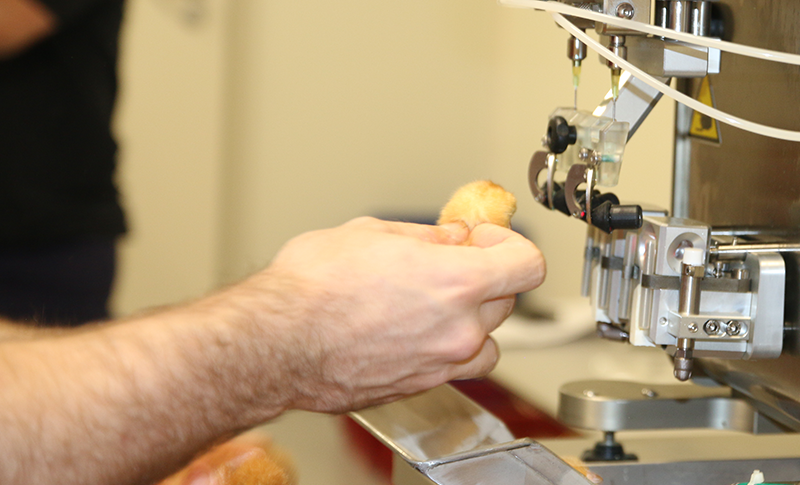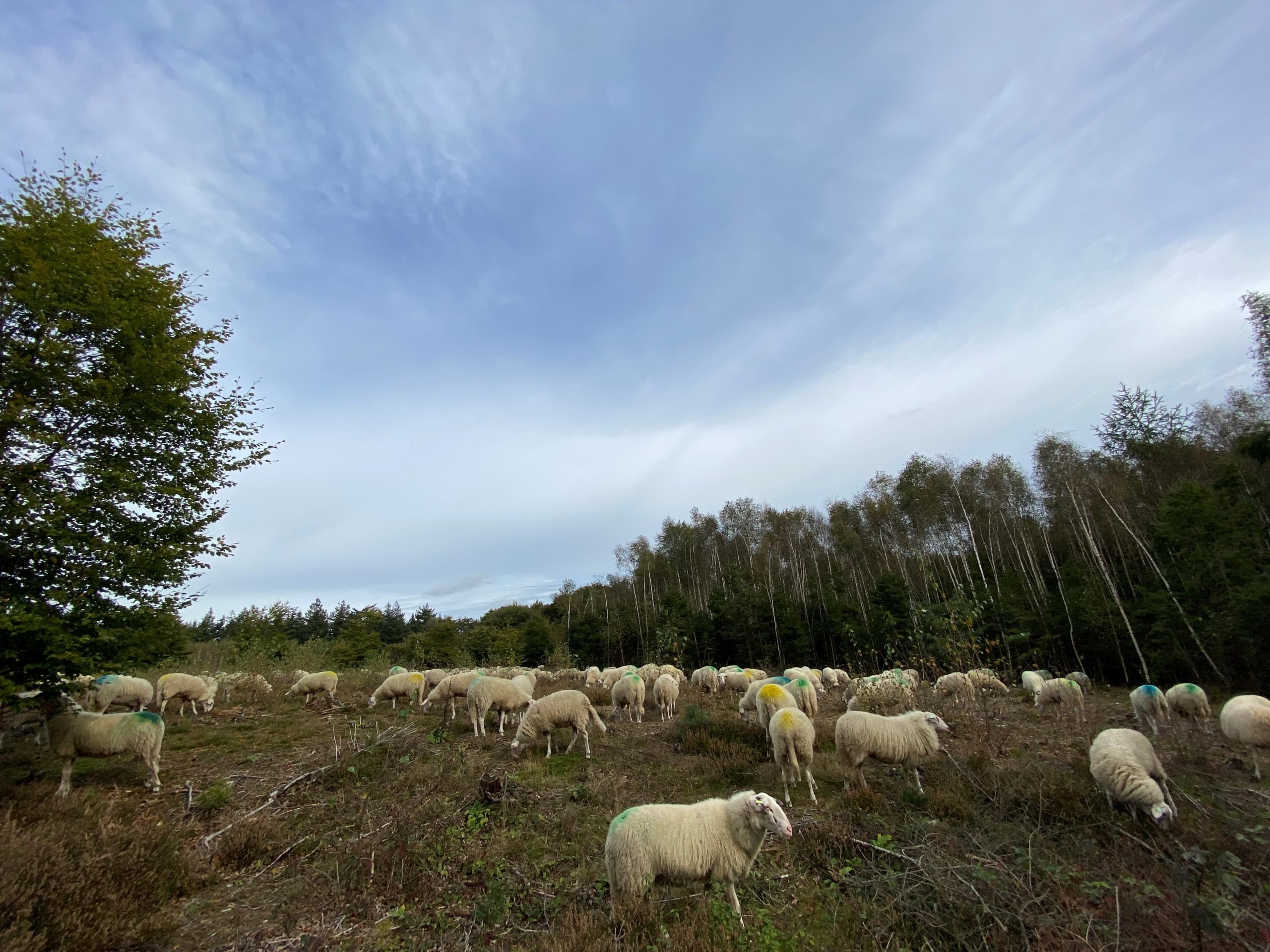The bluetongue outbreak in the Netherlands has not only caused many deaths among sheep, it is also casting a shadow over the mating season. This can be problematic for the smaller breeds – meaning numbers, not size: will they become endangered? Resource discussed the question with Annemieke Rattink and Noelle Hoorneman of the Netherlands Centre for Genetic Resources (CGN).
Temperatures are falling at last, and wiping out – for now at least – the midges that spread the bluetongue virus. Noelle Hoorneman, a sheep farmer as well as a researcher at CGN, knows from experience how catastrophic an outbreak can be: her flock was infected this autumn and she lost four of her 37 sheep. And that is a relatively low death rate. On average, about 25 to 30 per cent of affected flocks die of the disease.
The effects of the bluetongue outbreak are being felt in the Netherlands. Since the virus broke out here in September, more than 50,000 sheep have died of it – over five per cent of the national sheep population. The outbreak impacts future generations as well, as many infected animals fall so ill that it affects their fertility. And this happened right in the middle of the mating season. Among the larger farmed breeds such as Texel or Swifter sheep, that is primarily a financial headache. But in the case of the smaller breeds, there is more at stake.
More resistant
According to Annemieke Rattink, head of CGN’s farm animal cluster, this bluetongue variant affects all breeds of sheep. Some breeds do seem to be more vulnerable to it than others, although nothing conclusive can be said about that yet. ‘From the literature it is known that breeds that originally came from Africa are more resistant to several bluetongue variants,’ she says. ‘And there is also a theory that woollier breeds don’t get bitten by midges as easily.’ But geography may play a role too, she adds: ‘Some sheep breeds are mainly found in particular areas of the Netherlands and the severity of the bluetongue outbreak varies regionally. Moorland sheep, for example, tend to be kept on drier sandy terrain, where there may be fewer midges and therefore a lower risk of infection.’
Massive blow
Could the bluetongue virus endanger the numerically small Dutch breeds of sheep? Rattink: ‘Some breeds such as the Mergelland sheep have a population of only a few hundred. So if 30 per cent of them die, that’s a massive blow.’
Moreover, the Netherlands has not seen the back of the virus yet, she points out. If we don’t have a vaccine yet when the disease flares up again next spring, the death rate could soar again. Because there hardly seem to be any subclinical cases – sheep that get infected without observable symptoms. ‘That implies that animals only build up antibodies if they are symptomatic. A sick animal runs a 70 per cent risk of death, says the sheep farmers’ association NFSO.’ A scenario that could be very problematic for the smaller breeds.
Help
Breed associations and farmers who are seeing their breeding strategy hindered by bluetongue can get help from the CGN. Hoorneman: ‘We analyse populations, for instance. Then we can determine the genetic diversity within a population and which animals are the closest and the least closely related to each other. That gives us a basis for proposing options to breeders, if necessary making use of the genetics of related breeds.’ This support is offered free, being one of the CGN’s statutory research tasks (see inset).
The CGN also offers help in the form of a gene bank, as a backup in emergencies. This gene bank has been built up over 20 years. In spite of the devastation currently being wreaked by bluetongue, the CGN is not frantically collecting genetic material. Rattink: ‘Your instinct is to save what you can, especially when you know that certain animals are going to be slaughtered. But you have to collect genetic material before a crisis, not in the middle of it – that is too risky. We can’t run the risk of bluetongue getting into our gene bank. That could endanger our collections of all those rare old breeds. Nor do we want to run the risk of unintentionally helping the virus to spread.’
Not viable
Those are not the only complications. Hoorneman: ‘At present, the Netherlands Food and Consumer Product Safety Authority (NVWA) observes a strict protocol for the transportation of semen. Anyway, semen collection in sheep is not straightforward. If it is done at all, it’s a question of extracting epididymal semen (from the testicles of a slaughtered animal, ed.). But that is no longer an option now the NVWA requires a donor animal to be retested for bluetongue a few days later – in this case, the animal is already dead. And the electroejaculation method used on cows and horses won’t work: rams are not used to that at all. All things considered, collecting semen is not a viable option now.’
But to end on a positive note: the bluetongue virus outbreak has made it crystal clear how important the gene bank is and how valuable the collaboration of individual sheep farmers. Rattink: ‘Fortunately, we’ve been able to store the semen of a lot of sheep breeds. The safety net might not be as big as we would have liked, but at least there is a safety net.’
About the CGN
The CGN works on the maintenance of genetic diversity in Dutch (indigenous) trees, crops, farm animals and aquaculture species (fish, shellfish and seaweed). This is one of WUR’s statutory tasks.

 The Fries melkschaap, one of the small sheep breeds that are in danger of dying out due to the bluetongue virus. Photo Dierenbeeldbank/Jan Smit
The Fries melkschaap, one of the small sheep breeds that are in danger of dying out due to the bluetongue virus. Photo Dierenbeeldbank/Jan Smit 
![[Seriously?] No Santa as reindeer affected by bluetongue](https://www.resource-online.nl/app/uploads/2023/12/WEB_De-neus-1.png)
